Abstract
AIM: To review trends in multiple births and associated mortality in England and Wales since 1975, in the light of trends for earlier years; to assess, within the limitations of the available data, the extent of any association between multiple birth rates and assisted conception and drugs used for subfertility. METHODS: Data collected routinely in England and Wales, between 1975 and 1994, were retrospectively reviewed. These comprised Office of Population Censuses and Surveys (OPCS) data collected at the registration of live and stillbirths and deaths occurring under the age of 1 year in England and Wales from 1975 onwards. Department of Health data about NHS prescriptions dispensed outside hospitals within England for drugs which could be used in the medical management of subfertility were also included. RESULTS: The proportion of pregnancies that resulted in a registered multiple birth increased from a low of 9.9 per thousand in 1975 to 13.6 per thousand in 1994. Up to 1992, the increase was seen in all age groups except for women under 20, with the most substantial increase being in women aged 35 to 39. The rise in the rate of triplet and other higher order births was much steeper than that for all multiple births, increasing from 0.13 sets of triplets per thousand maternities in 1975, to 0.41 in 1994. Prescriptions dispensed for selected drugs that may be used for the medical management of subfertility and assisted conception became more common over this period. The fragmented nature of the data precluded direct comparison with changes in multiple birth rates, however. CONCLUSIONS: Although the causes of the rise since 1980 in multiple birth rates in general, and the dramatic rise in the triplet rate in particular, cannot be ascertained or quantified directly from routinely collected data, drugs used for subfertility and more recently, assisted conception, probably had a major role.
Full text
PDF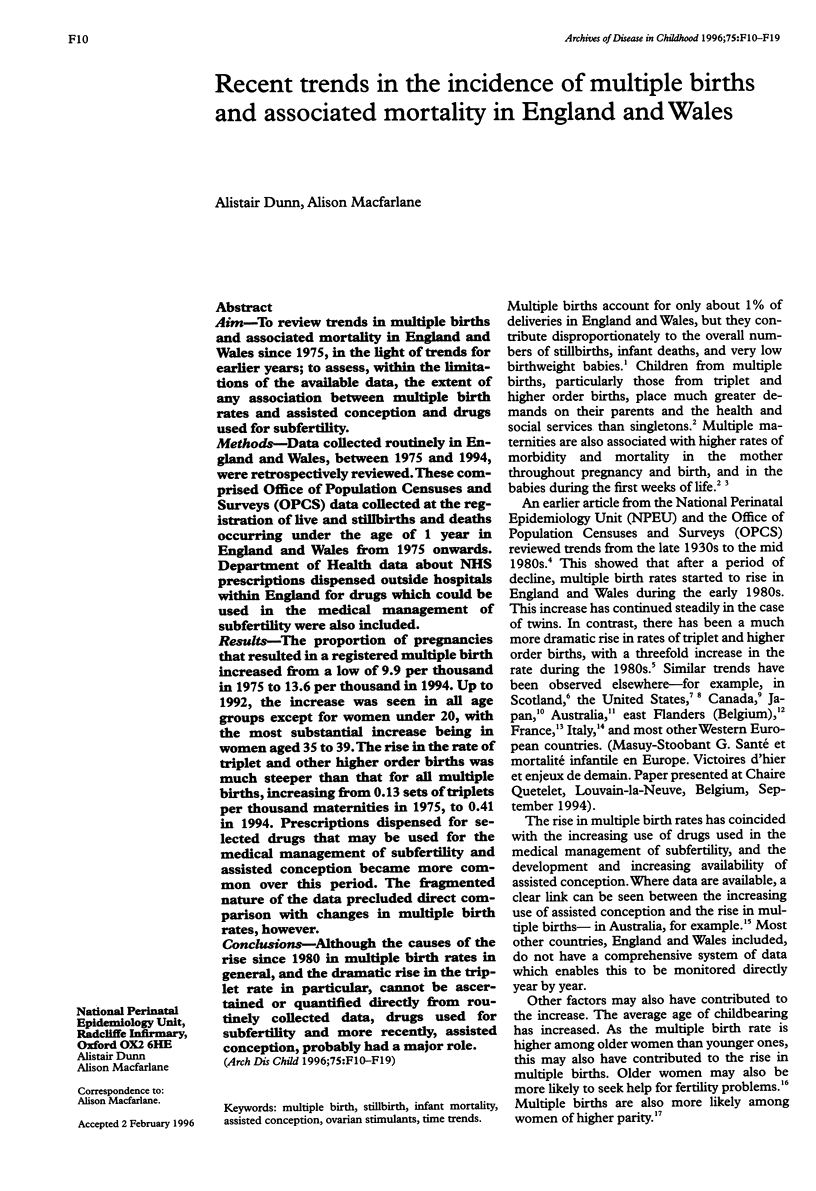
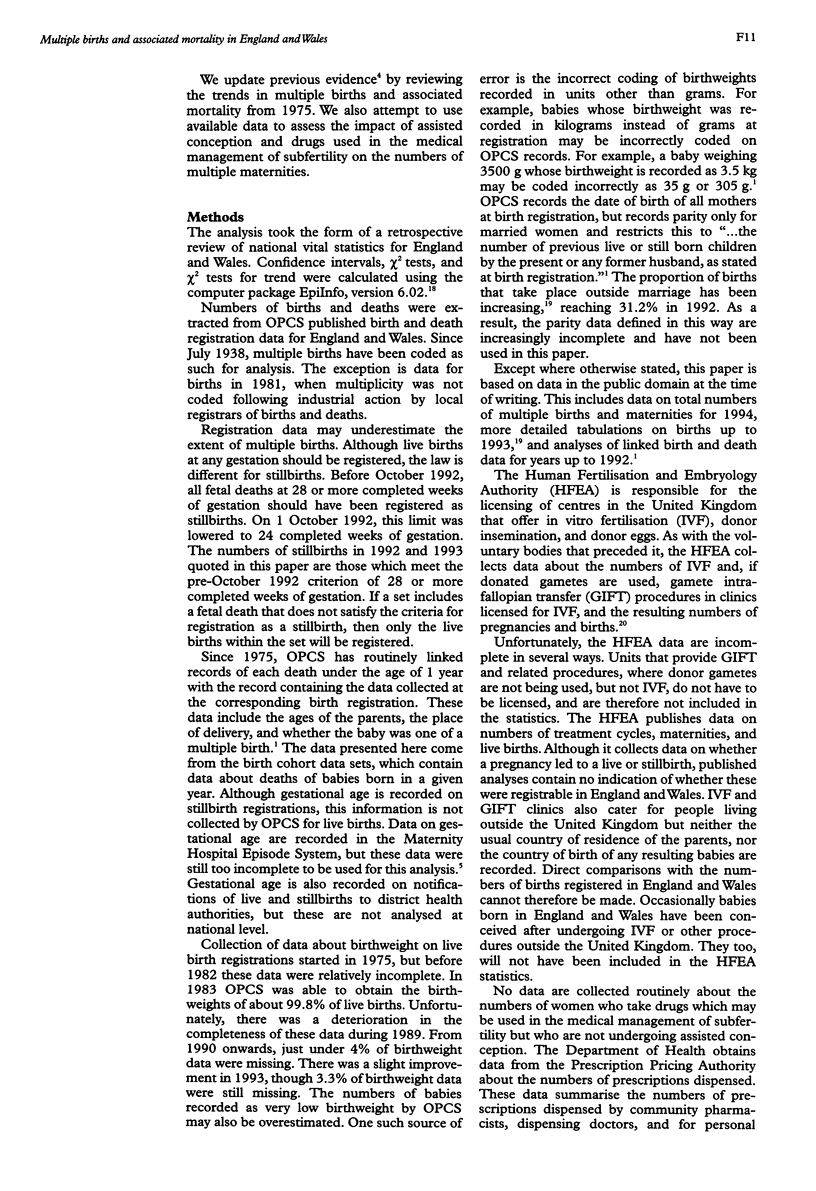
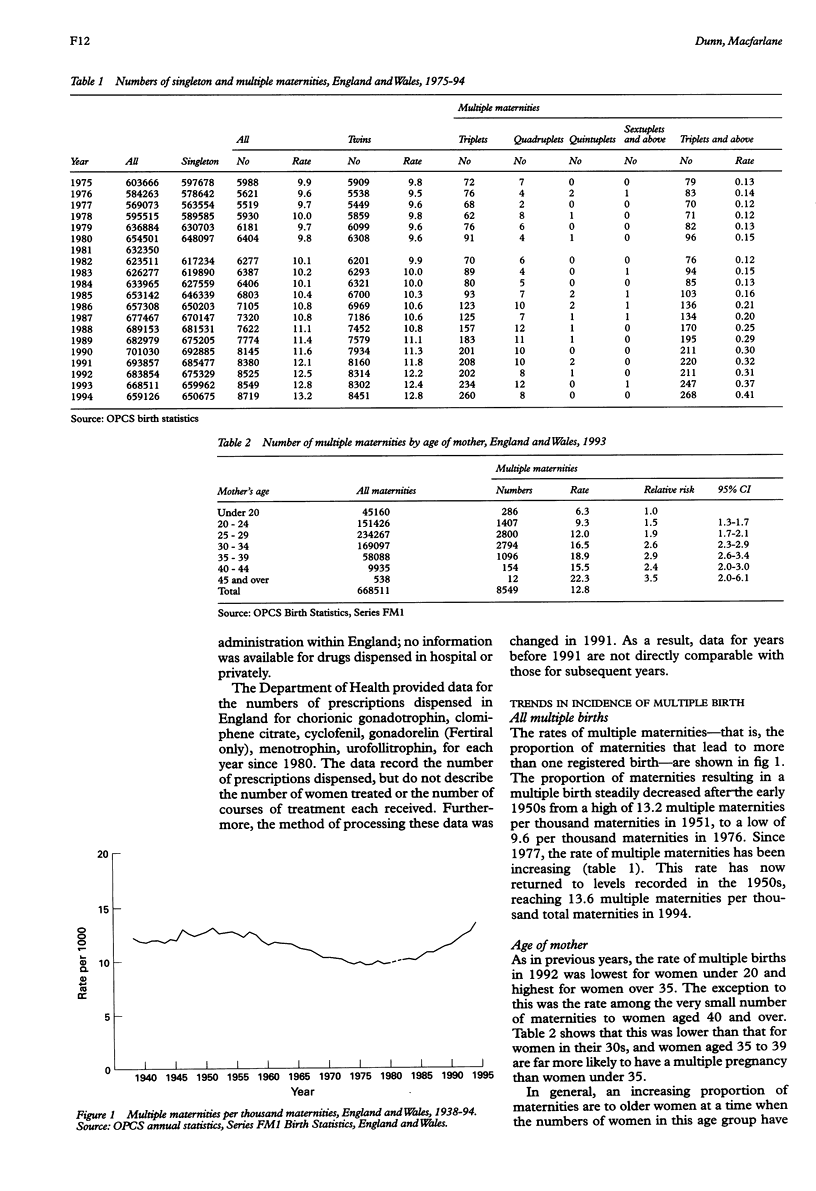
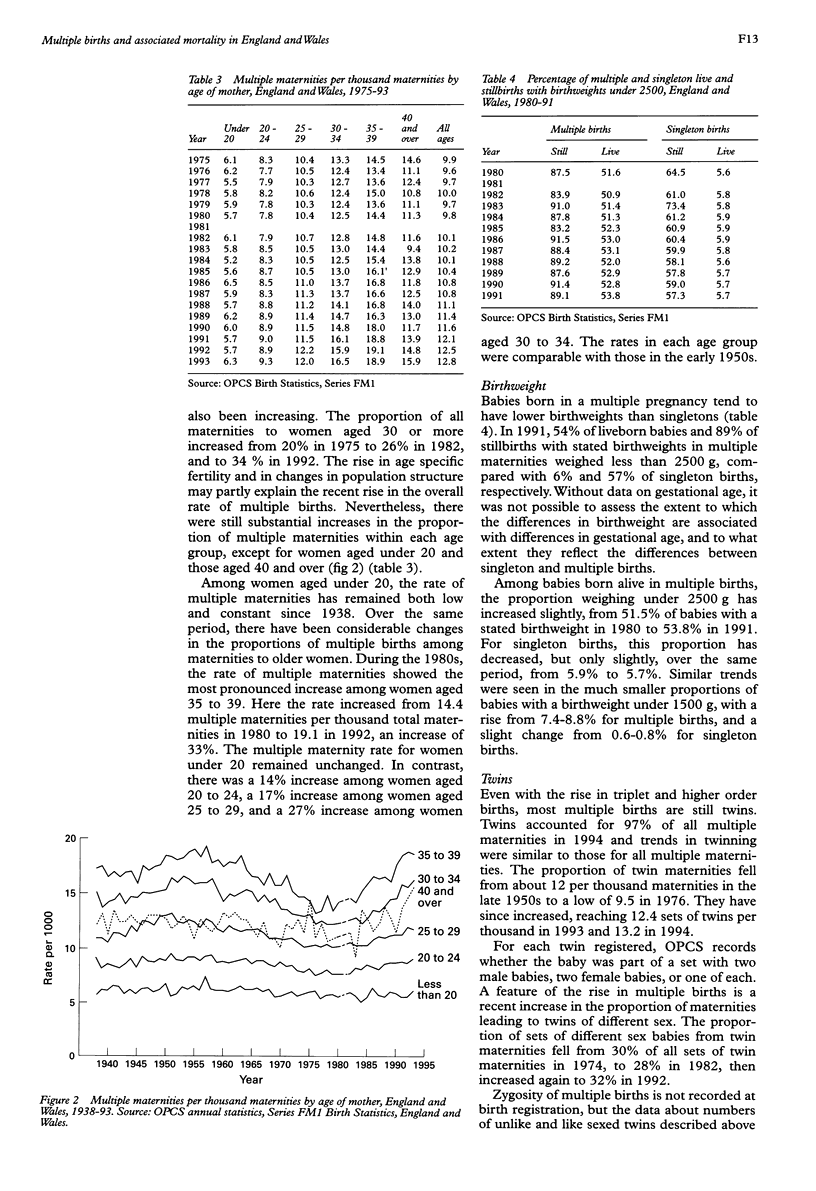
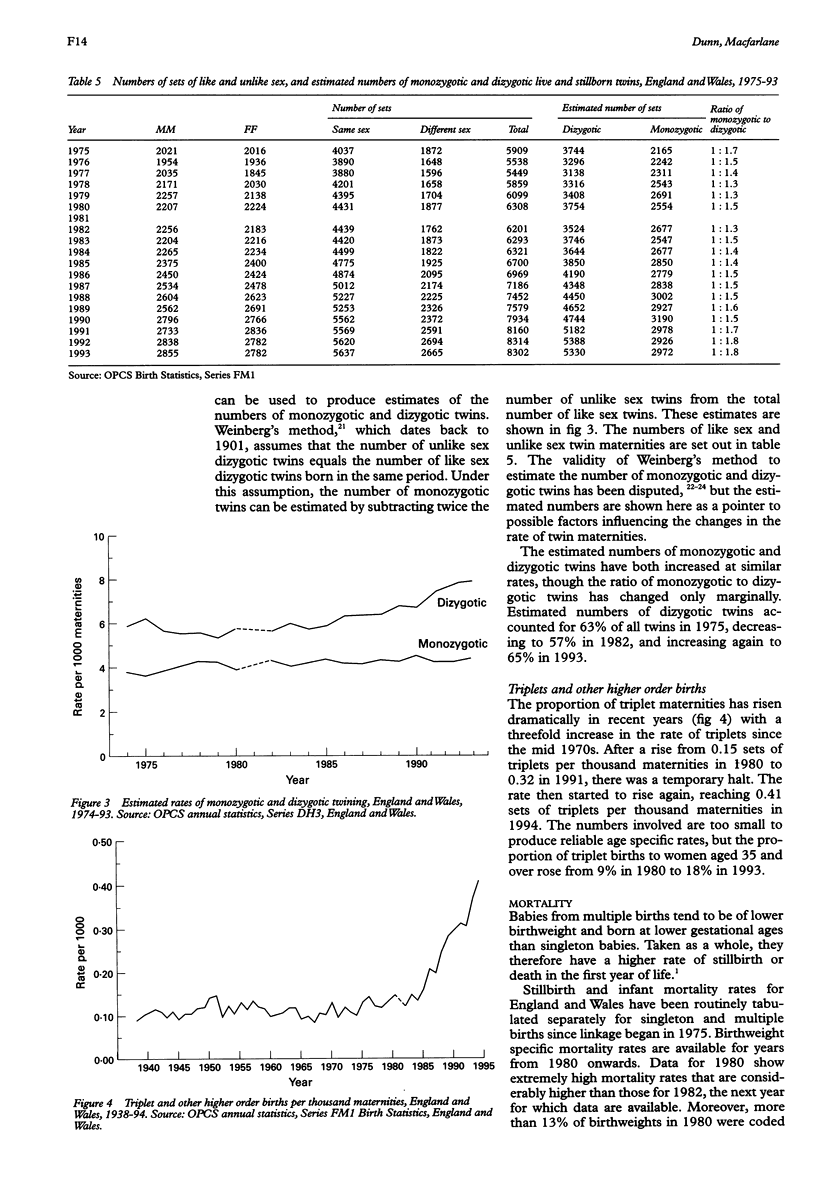
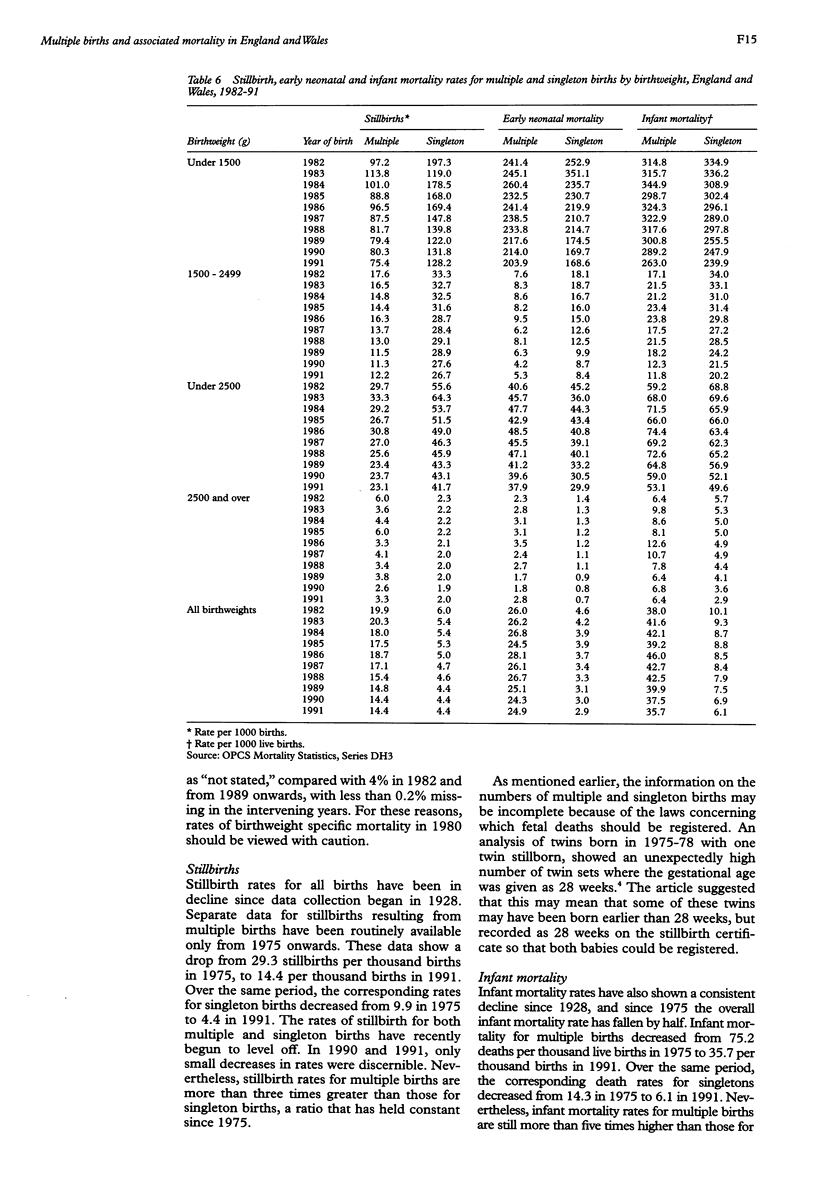
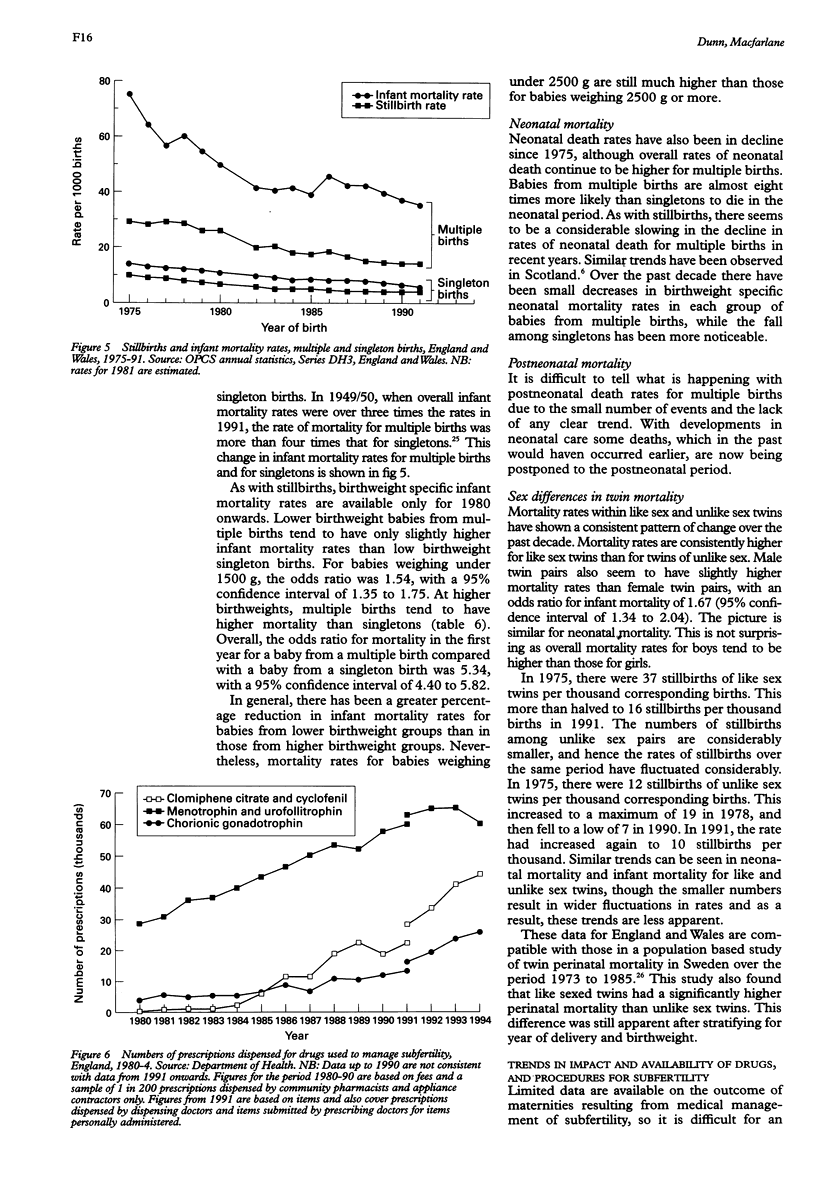
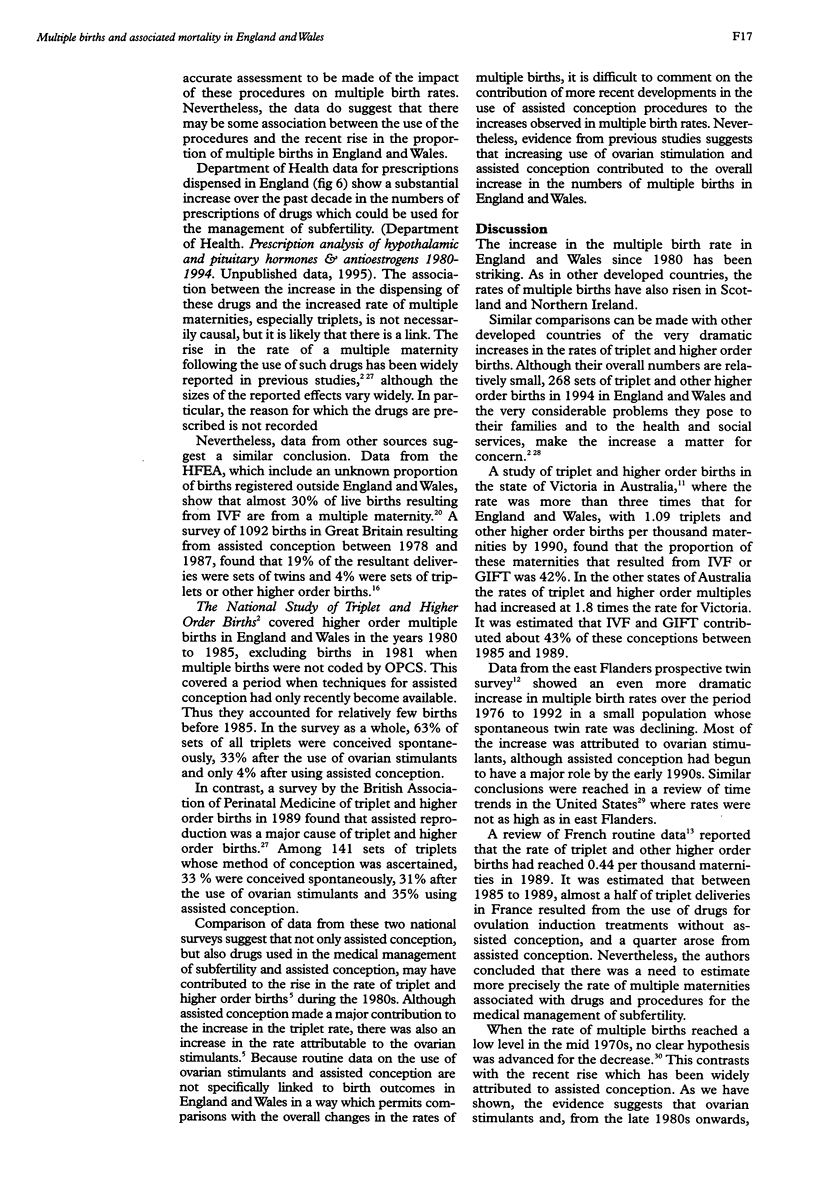
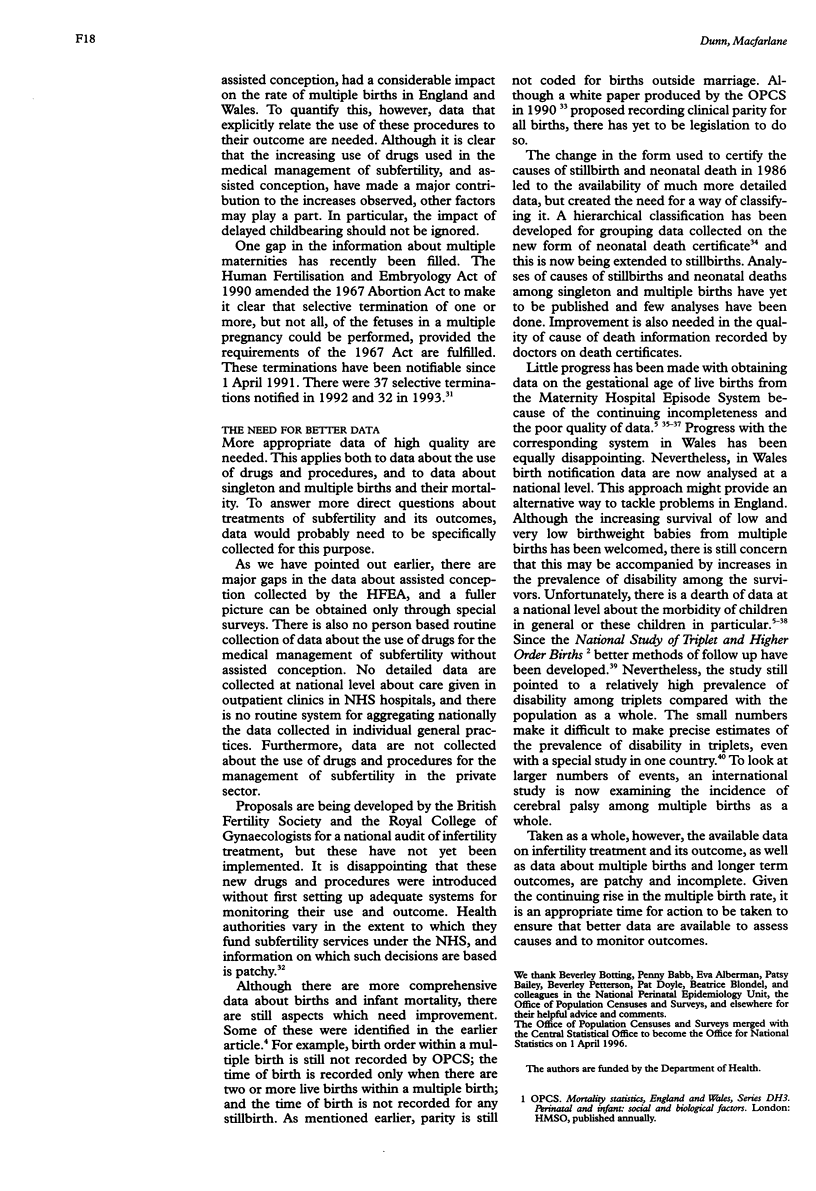
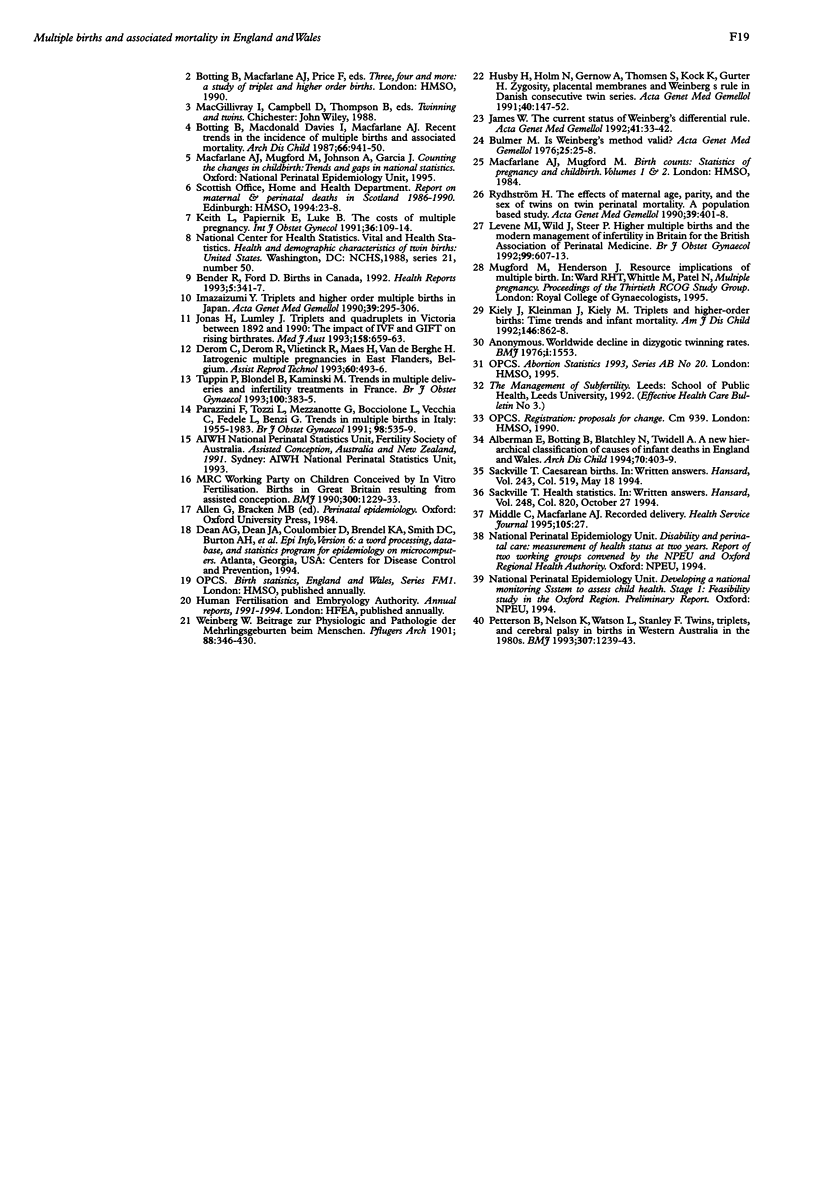
Selected References
These references are in PubMed. This may not be the complete list of references from this article.
- Alberman E., Botting B., Blatchley N., Twidell A. A new hierarchical classification of causes of infant deaths in England and Wales. Arch Dis Child. 1994 May;70(5):403–409. doi: 10.1136/adc.70.5.403. [DOI] [PMC free article] [PubMed] [Google Scholar]
- Bender R., Ford D. Births in Canada, 1992. Health Rep. 1993;5(4):341–347. [PubMed] [Google Scholar]
- Botting B. J., Davies I. M., Macfarlane A. J. Recent trends in the incidence of multiple births and associated mortality. Arch Dis Child. 1987 Sep;62(9):941–950. doi: 10.1136/adc.62.9.941. [DOI] [PMC free article] [PubMed] [Google Scholar]
- Bulmer M. G. Is Weinberg's method valid? Acta Genet Med Gemellol (Roma) 1976;25:25–28. doi: 10.1017/s0001566000013775. [DOI] [PubMed] [Google Scholar]
- Derom C., Derom R., Vlietinck R., Maes H., Van den Berghe H. Iatrogenic multiple pregnancies in East Flanders, Belgium. Fertil Steril. 1993 Sep;60(3):493–496. [PubMed] [Google Scholar]
- Husby H., Holm N. V., Gernow A., Thomsen S. G., Kock K., Gürtler H. Zygosity, placental membranes and Weinberg's rule in a Danish consecutive twin series. Acta Genet Med Gemellol (Roma) 1991;40(2):147–152. doi: 10.1017/s0001566000002579. [DOI] [PubMed] [Google Scholar]
- James W. H. The current status of Weinberg's differential rule. Acta Genet Med Gemellol (Roma) 1992;41(1):33–42. doi: 10.1017/s0001566000002488. [DOI] [PubMed] [Google Scholar]
- Jonas H. A., Lumley J. Triplets and quadruplets born in Victoria between 1982 and 1990. The impact of IVF and GIFT on rising birthrates. Med J Aust. 1993 May 17;158(10):659–663. doi: 10.5694/j.1326-5377.1993.tb121910.x. [DOI] [PubMed] [Google Scholar]
- Keith L. G., Papiernik E., Luke B. The costs of multiple pregnancy. Int J Gynaecol Obstet. 1991 Oct;36(2):109–114. doi: 10.1016/0020-7292(91)90764-v. [DOI] [PubMed] [Google Scholar]
- Kiely J. L., Kleinman J. C., Kiely M. Triplets and higher-order multiple births. Time trends and infant mortality. Am J Dis Child. 1992 Jul;146(7):862–868. doi: 10.1001/archpedi.1992.02160190094029. [DOI] [PubMed] [Google Scholar]
- Levene M. I., Wild J., Steer P. Higher multiple births and the modern management of infertility in Britain. The British Association of Perinatal Medicine. Br J Obstet Gynaecol. 1992 Jul;99(7):607–613. doi: 10.1111/j.1471-0528.1992.tb13831.x. [DOI] [PubMed] [Google Scholar]
- Parazzini F., Tozzi L., Mezzanotte G., Bocciolone L., La Vecchia C., Fedele L., Benzi G. Trends in multiple births in Italy: 1955-1983. Br J Obstet Gynaecol. 1991 Jun;98(6):535–539. doi: 10.1111/j.1471-0528.1991.tb10366.x. [DOI] [PubMed] [Google Scholar]
- Petterson B., Nelson K. B., Watson L., Stanley F. Twins, triplets, and cerebral palsy in births in Western Australia in the 1980s. BMJ. 1993 Nov 13;307(6914):1239–1243. doi: 10.1136/bmj.307.6914.1239. [DOI] [PMC free article] [PubMed] [Google Scholar]
- Rydhström H. The effects of maternal age, parity, and sex of the twins on twin perinatal mortality. A population based study. Acta Genet Med Gemellol (Roma) 1990;39(3):401–408. doi: 10.1017/s0001566000005341. [DOI] [PubMed] [Google Scholar]
- Tuppin P., Blondel B., Kaminski M. Trends in multiple deliveries and infertility treatments in France. Br J Obstet Gynaecol. 1993 Apr;100(4):383–385. doi: 10.1111/j.1471-0528.1993.tb12985.x. [DOI] [PubMed] [Google Scholar]


